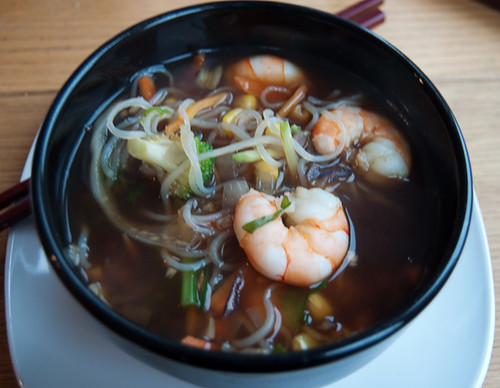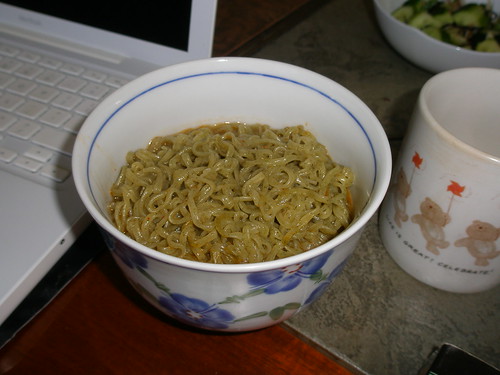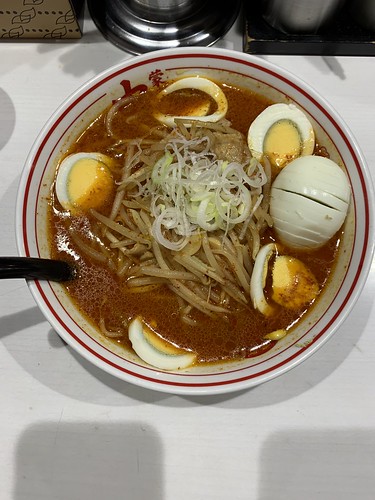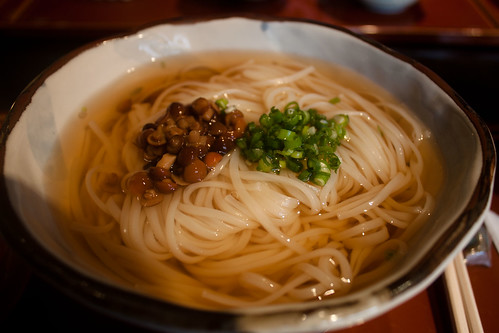When it comes to noodles…
Japan has oodles.
Of noodles. (Okay, bad joke I’ll see myself out.)
You might know about the types of Japanese ramen, but there’s more to life than just ramen.
In this guide, you’ll discover the 11+ types of Japanese noodles, what makes them special, when they’re eaten, and so on. Of course, if you want some Japanese noodles, there are some friendly affiliate links to products Amazon down below as well.
So, let’s get to it.
3 Major Types of Japanese Noodles
We can categorize Japanese noodles into 3 groups, based on the way in which the noodles are prepared.
The groups are Soba, Udon, and Chukamen.
Soba is what is traditionally eaten on New Year’s Eve in Japan. This practice is called TOSHIKOSHI SOBA (年越しそば). There are many meanings behind this practice, but essentially the consumption of the Soba noodles is said to be a prayer for long life!
Udon is as popular and as often consumed as soba.
Chukamen/Chuka noodles are noodles that originate from China, that is loved by many Japanese to make a variety of different dishes that we will most definitely cover.
The rest of this guide will look into noodles that fall within these 3 categories… so, 11 types of Japanese noodles (that fall into 3 groups).
1. Somen Noodles
Somen noodles are thin wheat noodles that are especially during the summer months.
They’re often eaten cold with a dipping sauce of dashi (bonito broth) and soy sauce. Compared to other Japanese wheat noodles, they can only be a maximum of 1.3 cm to be considered somen. Because of the thinness, somen can be a wonderful food to eat that feels healthy and doesn’t make you too full.
Click here to check it out on Amazon
2. Soba Noodles
Soba noodles are made from buckwheat noodles and…
They’re considered one of the traditional types of Japanese noodles. The origins of this noodle dates back to around 300 BC. The texture is chewy and slightly grainy.
Making soba noodles by hand can be very tricky because buckwheat is brittle when it’s turned into a dough. These days, soba noodles can be found in machine made and hand made forms. Soba is extremely healthy and can be good source of protein and fiber. In Japan, people enjoy cold soba with a dipping sauce or warm in a soy sauce broth.
3. Sanuki Udon Noodles
Udon also one of the most famous types of Japanese noodles — or buckwheat noodles.
And one of the most famous udon — is the Sanuki udon.
This type of noodle has a unique thick and chewy texture. And, in order for noodles to be called Sanuki udon, they must be produced in the Kagawa prefecture, be handmade, and have a certain ratio of water to wheat. Sanuki udon can be enjoyed cold or in a warm soy sauce broth to fully appreciate the texture of the noodles.

4. Chuuka Noodles
Chuuka noodles originate from China, but are an important part of Japanese cuisine.
This type of noodle can have a yellowish color and is made using kansui, which is lye water or an alkaline solution. The noodles can be found in a variety of sizes and shapes from thin, thick, and wavy. They’re used in many Japanese dishes such as ramen, yakisoba, and tsukemen.
So, keep in mind. Anytime you are eating ramen, you are eating Chukamen/Chinese noodles.
About Yakisoba
Although it contains the word, ‘Soba’, Yakisoba is not at all related to Soba noodles, and instead related to Ramen noodles – i.e. the noodles are made of wheat flour and not buckwheat.
Yakisoba is usually prepared with small pieces of pork and vegetables such as cabbage, onions, and carrots. Its’ flavour comes from the combination of Yakisoba sauce, salt and pepper. A common topping is what is known as Aonori (青のり) and Beni Shōga (紅生姜), Katsuobushi (鰹節), and Mayonnaise.
You will most definitely find Yakisoba as Japanese festivals known as Matsuri (祭り) and food stalls (屋台) in Japan as it is a staple street food.
5. Kishimen Noodles
Kishimen is a Japanese wheat noodle that is wide and flat.
It is less chewy than Sanuki udon and has a slippery texture. In order for noodles to be considered kishimen, they must be wider than 4.5 cm and the thickness should be around 2 mm. They are a regional noodle type of Aichi and Nagoya prefectures. These noodles can be enjoyed in many ways from warm soups or cold with a dipping sauce.
6. Shirataki Noodles
If you love noodles but don’t like the calories…
Then, Shirataki noodles can be a wonderful substitute for any of your favorite noodle dishes. Shirataki means “white waterfall” and the noodles come in a translucent white color. They are made from a special root called konjac, which is extremely low in calories. For example, 100 grams of Shirataki noodles only contain about 10 calories.
In Japanese cuisine, shirataki noodles are a popular addition to stews but in the west, they’re known as a low-calorie noodle substitute.

7. Himokawa Udon Noodles
One of the widest types of Japanese noodles are the Himokawa noodles… from the Gunma Prefecture.
These are wheat noodles that can be up to 15 cm wide. They are not chewy but you can enjoy the slippery texture of these thin and wide noodles. Because the noodles are so thin, they don’t require a lot of boiling. You can find Himokawa noodles in traditional Japanese soups or as a cold noodle with dipping sauce.
8. Moroheiya noodles
These are a relatively new is a relatively newer noodle that contains moroheiya, a special leafy vegetable that has a far greater amount of vitamins and fiber than other vegetables.
These noodles resemble soba or ramen noodles but with a green color. They are eaten in Japan as a substitute for other noodles. With moroheiya noodles, you can get a greater amount of nutrients than eating regular noodles.

9. Ranmen Noodle
Ranmen are egg noodles that are made in the Iwate prefecture. They consist only of egg, wheat, and salt. They have a very chewy texture because of the egg. Like most noodles in Japan, they can be eaten cold or in broths. One unique way that they are enjoyed in Iwate prefecture is in a curry broth. The thickness of the ranmen can be compared to the thickness of somen noodles.
10. Hiyamugi Noodles
These noodles are slightly thicker than somen, another Japanese wheat noodle. In order to be called hiyamugi they must be a maximum width of 1.7 mm. Hiyamugi is associated in Japanese cuisine as a noodle that is eaten during the summer. It is usually boiled, put through cold water, and accompanied by a dipping sauce. Hiyamugi is more popular in the Eastern part of Japan because it has a similar boiling time as soba noodles. Many soba noodle shops also serve hiyamugi during the summer.
11. Inaniwa Udon Noodles
Inaniwa udon is a special type of dried wheat noodle that is made in Akita prefecture. Although it includes udon in its name, it is actually closer to somen because they are relatively thin noodles. Inaniwa udon is made in a unique process where the dough is twisted while it is kneaded. This creates a noodle that has a pleasant and smooth mouthfeel. These delicate noodles are enjoyed cold or in a warm light broth.

Conclusion – Over to You
Now you know a bit about the different types of Japanese noodles.
And you know what makes each unique and tasty.
Have you tried any of these?
Which one is your favorite?
Leave a comment!
– Team IJ











